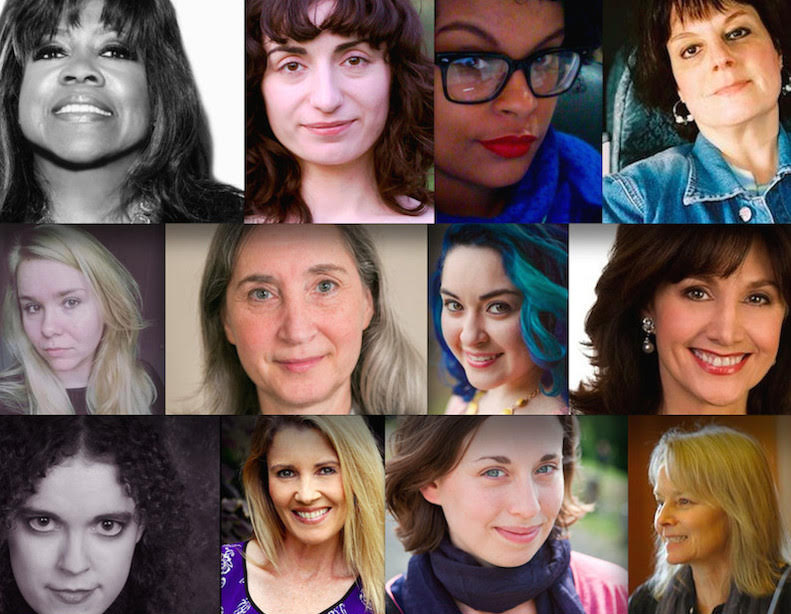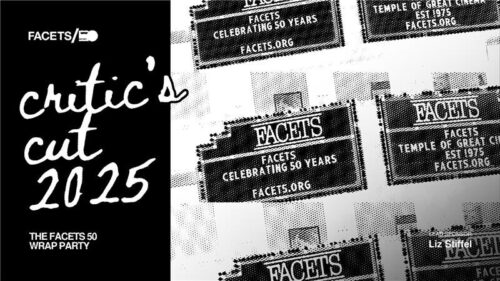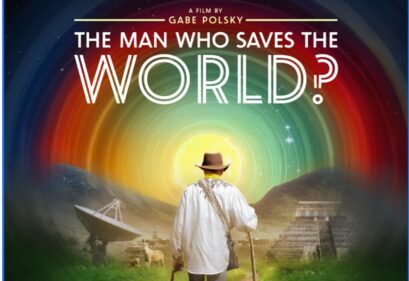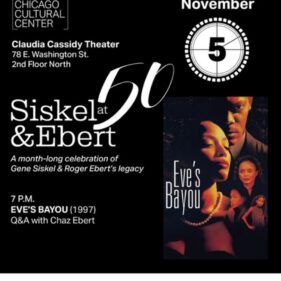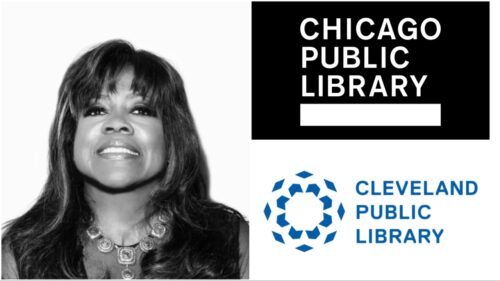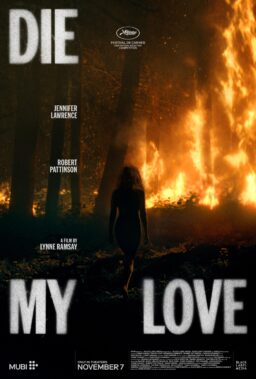This special edition of Thumbnails spotlights the efforts being made to amplify diverse voices in film criticism following Dr Stacy L. Smith’s report from USC’s Annenberg Inclusion Initiative. The lack of diversity among film critics is now under a microscope and some initiatives were announced at the Women in Film Crystal + Lucy Awards in Beverly Hills last night. They are detailed in some of the selected articles below.—Chaz Ebert
1.
“Critics Choice?: Gender and Race/Ethnicity of Film Reviewers Across 100 Top Films of 2017“: An essential report published by Marc Choueiti, Dr. Stacy L. Smith (Founder and Director of the Annenberg Inclusion Initiative at USC) & Dr. Katherine Pieper, with assistance from Ariana Case.
“Across the 100 top movies of 2017 and 19,559 reviews, male critics authored 77.8% of reviews and female critics authored 22.2%. This translates into a gender ratio of 3.5 male reviewers to every 1 female. White critics authored 82% of reviews whereas critics from underrepresented racial/ethnic groups authored 18%. This point statistic is substantially below (-20.7 percentage points) U.S. Census, where individuals from underrepresented groups clock in at 38.7% of the population. Looking at reviews through an intersectional lens, White male critics wrote substantially more reviews (63.9%) than their White female (18.1%) or underrepresented male (13.8%) peers. Underrepresented female critics only wrote 4.1% of the sample. The ratio of White women’s reviews to those of their underrepresented female counterparts was 4.4 to 1. Given that reviewers often evaluate multiple films in the sample, we were also interested in the total number of unique or individual film critics. Just over two-thirds of individual critics were males (68.3%) and 31.7% were females. Of those ascertained for race/ethnicity, a full 76.3% of all critics were White and 23.7% were from underrepresented racial/ethnic backgrounds (UR). The majority of all critics were White males (53.2%) followed by White females (23%), UR males (14.8%), and then UR females (8.9%).”
2.

“Where Are All the Diverse Voices in Film Criticism?“: Asks RogerEbert.com publisher Chaz Ebert at The Daily Beast.
“It is not enough to have reviewers who understand how to discuss film. We need reviewers who can speak deeply and with nuance because of their lived experiences. The trusted voices in film criticism should be diverse ambassadors who have access to the larger conversation. If we can’t recognize ourselves within the existing public discourse, we are implicitly being asked to devalue our experiences and accept a narrative that is not our own. Excluding diverse voices from the conversation de-emphasizes the value of our different experiences. It is critical that the people who write about film and television and the arts—and indeed the world—mirror the people in our society. Recently, I partnered with the Hawaii International Film Festival to launch the first Ebert Young Writers for the Arts program in Hawaii. Roger and I fell in love in Hawaii and developed an interest in its history and culture. We attended the film festival there for many years and witnessed the importance of a strong authentic voice in film. This program is meant to broaden and strengthen film criticism culture in Hawaii. In a swiftly changing media environment, informed writing and criticism on cinema by diverse voices is vital to a strong film culture and industry. For our first class of eight students, we chose Chicago-based Kevin B. Lee, an award-winning filmmaker, educator, and film critic, as a mentor.”
3.

“Brie Larson Says Sundance And Toronto Festivals To Allocate 20% Of Press Credentials To Underrepresented Journalists“: According to Deadline‘s Antonia Blyth.
“Collecting the Crystal Award for Excellence in Film, Larson said that Sundance would ensure ‘at least 20 percent of their top level press passes will go to underrepresented critics.’ She added that TIFF would do the same. ‘Although it already has regional diversity outside of Canada and the U.S.,’ she said, ‘it’s working towards [adding] an additional 20 percent of underrepresented voices from across the globe.’ Explaining she had decided to dedicate her acceptance speech to something that’s ‘really important’ to her, Larsen cited USC Annenberg’s inclusivity initiative, which published its study results earlier this week. Quoting their findings, she said: ’67 percent of the top critics reviewing the 100 highest-grossing movies in 2017 were white males; less than a quarter were white women; less than ten percent were underrepresented men. Only 2.5 percent of those top critics were women of color.’ Larson pointed out that this was a ‘huge disconnect’ for the US population, given that its breakdown is 30 percent white men, 30 percent white white women, 20 percent men of color and 20 percent women of color. ‘Am I saying that I hate white dudes? No I’m not,’ she said, to laughter from the audience. ‘But what I am saying is if you make a movie that is a love letter to a woman of color, there is an insanely low chance that a woman of color will have a chance to see your movie and review your movie.’”
4.

“Rotten Tomatoes Alternative CherryPicks to Battle Gender Imbalance in Film Criticism“: This exciting new site is spotlighted by The Hollywood Reporter‘s Etan Vlessing.
“In the midst of annual studies measuring representation behind the camera, Hollywood is well aware that it needs to give female directors more opportunities to tell their own stories. But film producer/director Miranda Bailey (‘The Squid and the Whale,’ ‘The Diary of a Teenage Girl’) insists the gender imbalance among U.S. film critics — the vast majority are men — also needs addressing. So she’s launching CherryPicks, a Rotten Tomatoes-style site featuring female-only critics so they can recommend movies to like-minded women headed to the multiplex or streaming services and get their critical voices amplified. ‘We’re creating a platform where women can go to and see what other critics that are their gender think about art and media,’ Bailey told The Hollywood Reporter. She added that the current #MeToo and Time’s Up campaigns have no direct bearing on CherryPicks’ launching. Instead, the site, unveiled at SXSW, has emerged because just over half of moviegoers and new streaming music users are women — and most art and media critics are men. ‘I’m trying to create more diversity,’ Bailey explained.”
5.

“EBONY Partners With The African American Film Critics Association“: As reported by Ebony‘s Jessica Bennett.
“Over the past 15 years, the African American Film Critics Association (AAFCA) has critiqued films seminal to the Black experience as well as mainstream and critically acclaimed features. As the largest collection of African-American film critics in North America, the AAFCA is highly respected by some of the biggest figures within the industry, including Spike Lee, Jordan Peele and former AAFCA publicist Ava DuVernay. EBONY Media Operations is proud to announce our new partnership with the collective of film connoisseurs, who will be providing insightful and poignant analysis of the very best Hollywood has to offer, ensuring our voices are represented within cinema dialogue. ‘When my colleagues and I are looking at a film, we are looking at more than if it is good or not,’ said AAFCA President Gil Robertson IV. ‘While that may indeed be the bottom line for most of us, a film critic can be a great cheerleader who creates greater awareness about up and coming talent. For those creating the work, the critic can also serve as a constructive voice that points to a filmmaker’s strengths while noting their weaknesses or areas needing improvement. This is certainly what the African American Film Critics Association does and more.’ Indeed, the organization reaches beyond the world of cinema coverage, advocating for creatives of color who produce incredible work that could possibly fly under the radar.”
6.
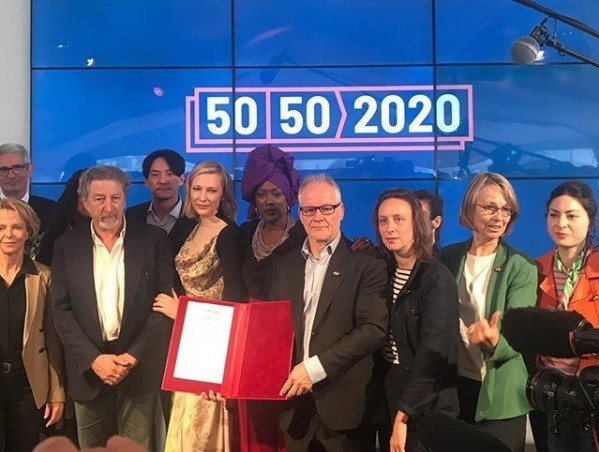
“Cannes Film Festival Signs Pledge In Push for Gender Parity“: A recent article published by Melissa Silverstein on her indispensable site, Women And Hollywood. See also: The site’s full list of female film and TV critics/writers.
“Prior to the pledge signing there was a panel with women who have started organizations in different countries over the last several months in the wake of the reckoning rocking the film industry. There were representatives from Italy, Greece, and Spain, as well as the UK and the U.S. #TimesUp movements. There is clearly very strong momentum to increase opportunities for women, to get a sense of the numbers in places where there have been no statistics previously, and to work together across borders to continue the push for change. But let’s not forget that there has been work going on for decades across the globe focused on this issue. Granted, this work hasn’t moved the dial enough, but it is important for the women who are new to this movement to make sure not to start over from the beginning and I encourage them to reach out to the people who have been working on this issue for some time. And a lot of the places on the forefront of this issue across the globe are women’s film festivals, which have been programming women directors for decades. When the time came for the signing of the pledge, it was clear that Frémaux was very uncomfortable. I am told he speaks perfect English, and yet he spoke only French and his comments were not translated. He made a couple of sexist joke and it seemed like he had never read the pledge before. It’s embarrassing. He is showing his lack of interest, and lack of understanding on this topic. But he signed, and now the key is to make sure that he is held accountable and, of course, to make sure there are more women-directed films in competition in the future.”
7.

“The Alliance of Women Film Journalists: The First Ten Years“: An in-depth look at the excellent organization, penned by Jennifer Merin for our site.
“In recalling conversations that precipitated the founding of AWFJ, Maitland McDonagh notes, ‘I was very aware that there was an undue level of interest about what I, as a female critic working in visual media, look like. Comments made about my hair and what I was wearing were completely inappropriate—like critiques of actresses based on their appearance rather than their performance. There was also a prevalent assumption that women critics have more emotional responses to films, and are incapable of analytical thought. That’s just plain wrong. Gushing fanboys—whether they’re women or men—have their place in the film universe, but most women who write about film are not fanboys. We bring serious consideration and unique perspectives to our commentaries. We deserve to be heard and taken seriously.’ AWFJ founders’ meetings were intimate and inspiring. ‘Conceiving and developing AWFJ was, for me, a real labor of love in its best sense,’ says Joanna Langfield. ‘We were acutely aware of the lack of support for and attention to the female minority of critics and film journalists. We wanted to build a haven for the global collection of professionals out there, fighting the good fight. Time and economics have impacted the group, as would be expected. But the intent remains strong: a place for enhancement and camaraderie, along with a good old dose of fun.’”
Image of the Day

This priceless New Yorker cartoon was selected by Chaz Ebert as the header photo for her introduction to this year’s installment of Women Writers Week at RogerEbert.com. For the complete table of contents, click here.
Video of the Day
Powerful statements made by Oscar winners Brie Larson and Frances McDormand at the Women in Film Crystal + Lucy Awards in Beverly Hills last night.
